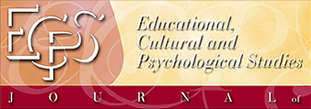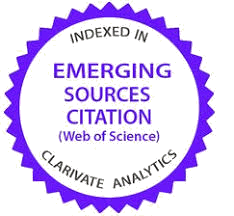Prove di comprensione del testo: dalla somministrazione alla revisione
Abstract
The paper describes the review procedure for a reading comprehension test designed for high school students. The objective is to analyze the functioning of a measuring instrument, used in the context of an investigation on reading in the high schools of three Italian regions – Basilicata, Calabria and Campania – in order to improve and perfect this instrument in view of the subsequent research phases. The reflections that follow are intended to provide a guide for the interpretation of the response frequencies, the indices of discrimination and difficulty, useful for establishing which questions need further revision. By analyzing internal consistency, construct validity, understood as item discriminativity, difficulty, biserial point values and distribution of answers on the four options provided by the multiple answer, we intend to demonstrate how, by administering the same test several times, we they can obtain new indications that allow them to file and refine the problematic questions, reflecting on the critical issues that have emerged (Agrusti, 2008).
Keywords
Full Text:
PDFReferences
Alexander, P. A., & Jetton, T. L. (2000). Learning from text: A multidimensional and developmental perspective. Handbook of Reading Research, 3, 285-310.
Benvenuto, G. (2018). Mettere i voti a scuola. Introduzione alla docimologia. Roma: Carocci.
Bottani, N. (2011). Come si impara a leggere nei paesi europei. Una indagine di Euridyce sulla lettura.
http://www.adiscuola.it/adiw_brevi/?p=5911
Cain, K., Oakhill, J., & Bryant, P. (2004). Children’s reading comprehension ability: Concurrent prediction by working memory, verbal ability, and component skills. Journal of Educational Psychology, 96(1), 31-42.
https://doi.org/10.1037/0022-0663.96.1.31
Calenda, M., Ferrantino, C., Petolicchio, A. M., & Milito, F. (2020). Costruzione e presentazione di una prova di comprensione della lettura. In Le Società per la società. Ricerca, scenari, emergenze (pp. 138-146). Lecce: Pensa Mutimedia.
De Beni, R., & Pazzaglia, F. (1992). La comprensione del testo. Modelli teorici e programmi di intervento. Torino: Liviana.
Dell’Acqua, R., & Turatto, M. (2006). Attenzione e percezione. Roma: Carocci.
De Luca, A. M., & Lucisano, P. (2011). Item analisi tra modello e realtà. Giornale Italiano della Ricerca Educativa, 4(7), 85-96.
Gallina, V. (2006). Letteralismo e abilità per la vita. Indagine nazionale sulla popolazione italiana 16-65 anni. Roma: Armando.
Gattullo, M., & Giovannini, M. L. (1989). Misurare e valutare l’apprendimento nella scuola media. Milano: Mondadori.
Giovannini, M. L., & Ghetti, M. (2015). Prove standardizzate di comprensione dei testi per la scuola secondaria di I grado. I. In entrata e in uscita dalla classe prima. Milano: LED Edizioni.
Graesser, A. C., Millis, K. K., & Zwaan, R. A. (1997). Discourse comprehension. Annual Review of Psychology, 48, 163-189.
https://doi.org/10.1146/annurev.psych.48.1.163
PMid:15012477
Intraversato, A. (2010). La comprensione della lettura fra abilità e conoscenze enciclopediche. Indagine sui licei.
http://padis.uniroma1.it/bitstream/10805/974/1/tesi%20intraversato%20lettura%2020_04.pdf
Just, M. A., Carpenter, P. A., & Woolley, J. D. (1982). Paradigms and processes and in reading comprehension. Journal of Experimental Psychology (General) 3, 228-238.
https://doi.org/10.1037/0096-3445.111.2.228
Kintsch, W. (1974). The representation of meaning in memory. Hillsdale, NJ: Lawrence Erlbaum Associates.
Lastrucci, E. (1995). Che cosa significa comprendere un testo. In G. Benvenuto, E. Lastrucci, & A. Salerni, Leggere per capire. Misurazione e valutazione delle competenze nella lettura a livello di adolescenza. Roma: Anicia.
Lord, F. M. (1980). Applications of item response theory to practical testing problems. Hillsdale, NJ: Lawrence Erlbaum Associates.
Lucas, R., & Norbury, C. F. (2015). Levels of text comprehension in children with Autism Spectrum Disorders (ASD): The influence of language phenotype. Journal of Autism and Developmental Disorders, 44(11).
https://doi.org/10.1007/s10803-014-2133-7
PMid:24849254
Lumbelli, L. (2009). La comprensione come problema. Il punto di vista cognitivo. Roma - Bari: Laterza.
Maltese, A., Scifo, L., & Pepi, A. (2019). Fare inferenze. Storie e attività per potenziare la comprensione del testo. Trento: Erickson.
Moretti, G., & Quagliata, A. (1999). Strumenti pe la valutazione degli apprendimenti. Le prove di verifica strutturate e semistrutturate. Roma: Monolite.
Neisser, U. (1967). Cognitive psychology. New York: AppletonCentury-Crofts.
OECD (2018). PISA 2018. Reading literacy framework.
https://www.oecd.org/pisa/pisaproducts/PISA-2018-draft-frameworks.pdf
Olson, D. R. (1994). The world on paper. Cambridge: Cambridge University Press.
Salerni, A. (1995). Come costruire prove oggettive di comprensione della lettura. In G. Benvenuto, E. Lastrucci, & A. Salerni, Leggere per capire. Strumenti e tecniche per la rilevazione della competenza nella lettura a livello di adolescenza (pp. 65-118). Roma: Anicia.
Thorndike, E. L. (1914). The measurement of ability in reading: Preliminary scales and test. Colombia: Teachers College.
Trinchero, R. (2002). Manuale di ricerca educativa. Milano: FrancoAngeli.
Vertecchi, B., & Agrusti, G. (2008). Laboratorio di valutazione. Roma - Bari: Gius. Laterza & Figli Spa.
Zanetti, M. A., & Miazza, D. (2004). La comprensione del testo. Modelli e ricerche in psicologia. Roma: Carocci.
DOI: https://doi.org/10.7358/ecps-2020-022-cale
Copyright (©) 2020 Marika Calenda, Concetta Ferrantino, Anna Maria Petolicchio – Editorial format and Graphical layout: copyright (©) LED Edizioni Universitarie

This work is licensed under a Creative Commons Attribution-NonCommercial-NoDerivatives 4.0 International License.
Journal of Educational, Cultural and Psychological Studies (ECPS)
Registered by Tribunale di Milano (19/05/2010 n. 278)
Online ISSN 2037-7924 - Print ISSN 2037-7932
Research Laboratory on Didactics and Evaluation - Department of Education - "Roma Tre" University
Executive Editor: Gaetano Domenici - Associate Executive Editor & Managing Editor: Valeria Biasci
Editorial Board: Eleftheria Argyropoulou - Massimo Baldacci - Joao Barroso - Richard Bates - Christofer Bezzina - Paolo Bonaiuto - Lucia Boncori - Pietro Boscolo - Sara Bubb - Giuseppina Castellana - Carlo Felice Casula - Jean-Émile Charlier - Lucia Chiappetta Cajola - Carmela Covato - Jean-Louis Derouet - Peter Early - Franco Frabboni - Constance Katz - James Levin - Pietro Lucisano - Roberto Maragliano - Romuald Normand - Michael Osborne - Donatella Palomba - Nazarena Patrizi - Michele Pellerey - Clotilde Pontecorvo - Vitaly V. Rubtzov - Jaap Scheerens - Noah W. Sobe - Francesco Susi - Giuseppe Spadafora - Pat Thomson
Editorial Staff: Fabio Alivernini - Guido Benvenuto - Anna Maria Ciraci - Massimiliano Fiorucci - Luca Mallia - Massimo Margottini - Giovanni Moretti - Carla Roverselli
Editorial Secretary: Nazarena Patrizi
© 2001 LED Edizioni Universitarie di Lettere Economia Diritto







